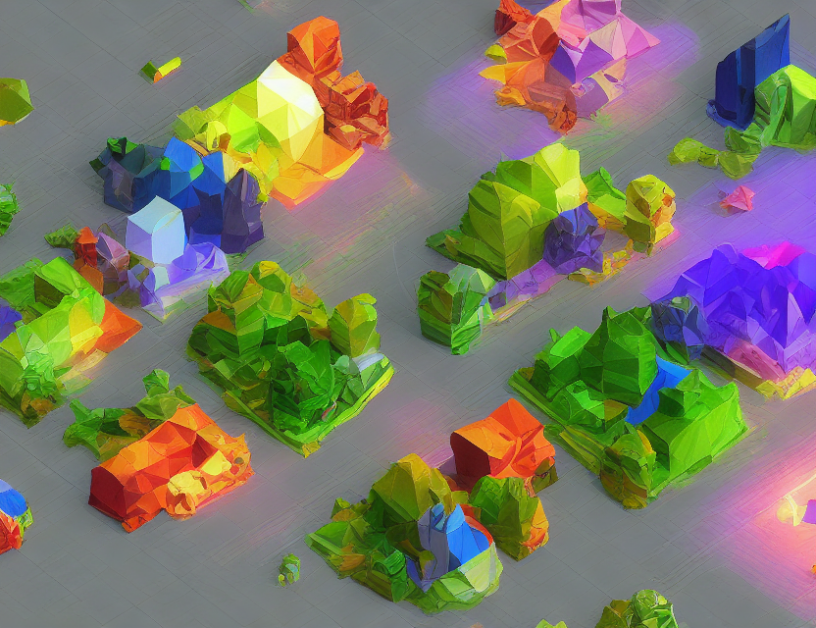Imagine you’re a painter, and you want to create a beautiful landscape. You could start with a blank canvas and paint each tree, rock, and cloud individually, but that would take forever! Instead, you can use "neural graphics primitives" – like building blocks of 3D objects that you can combine in different ways to create whatever scene you want. This article introduces a new approach to generating 3D objects using neural networks, which can revolutionize the way we create and manipulate digital content.
Neural Graphics Primitives
Neural graphics primitives are like LEGO blocks for 3D objects. They are simple, reusable building blocks that can be combined in various ways to create complex scenes. These primitives are learned using neural networks, which means they can generate new and diverse shapes without requiring explicit programming. The authors propose a method called "multiresolution hash encoding," which allows these primitives to be combined efficiently and quickly.
Advantages of Neural Graphics Primitives
- Speed: With neural graphics primitives, generation becomes faster than ever before, even for complex scenes. This is because the building blocks are pre-defined, so they can be combined quickly without requiring a lot of computation.
- Flexibility: The ability to combine these primitives in different ways means that you can generate a wide range of shapes and scenes with ease. Imagine being able to create a beautiful landscape or a detailed cityscape with just a few simple steps!
- Quality: The use of neural networks ensures that the generated objects are high-quality and realistic, even for complex scenes. This means that you can generate 3D models that look like they were created by a professional artist, without requiring any manual skill or effort.
Applications of Neural Graphics Primitives
- Computer-aided design (CAD): With the ability to quickly and easily generate high-quality 3D models, neural graphics primitives can revolutionize the field of CAD. Imagine being able to create intricate designs and architectural models with just a few clicks!
- Video games: Neural graphics primitives can be used to create detailed environments and characters for video games, reducing the time and effort required to create these assets. This means that game developers can focus on other aspects of game design, such as storytelling and player engagement.
- Virtual reality (VR) and augmented reality (AR): Neural graphics primitives can be used to generate detailed and realistic objects in VR and AR environments, enhancing the overall user experience. Imagine being able to interact with virtual objects that look and feel like they are part of the real world!
Conclusion
Neural graphics primitives represent a significant breakthrough in the field of 3D generation, offering a fast, flexible, and high-quality approach to creating digital content. With their ability to quickly generate complex scenes and objects, these building blocks can revolutionize various industries such as CAD, video games, VR/AR, and more. As technology continues to advance, we can expect to see even more exciting applications of neural graphics primitives in the future!



